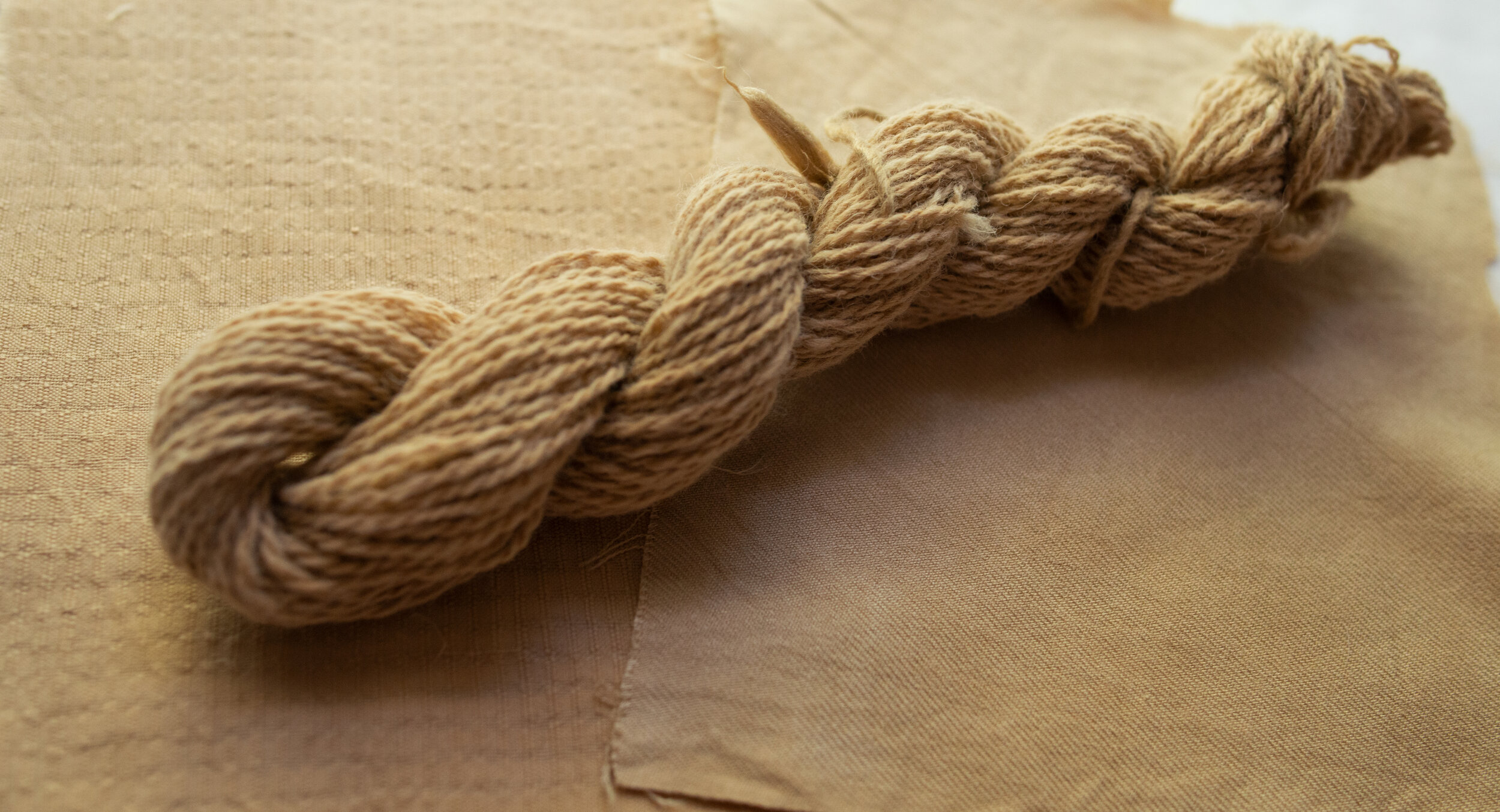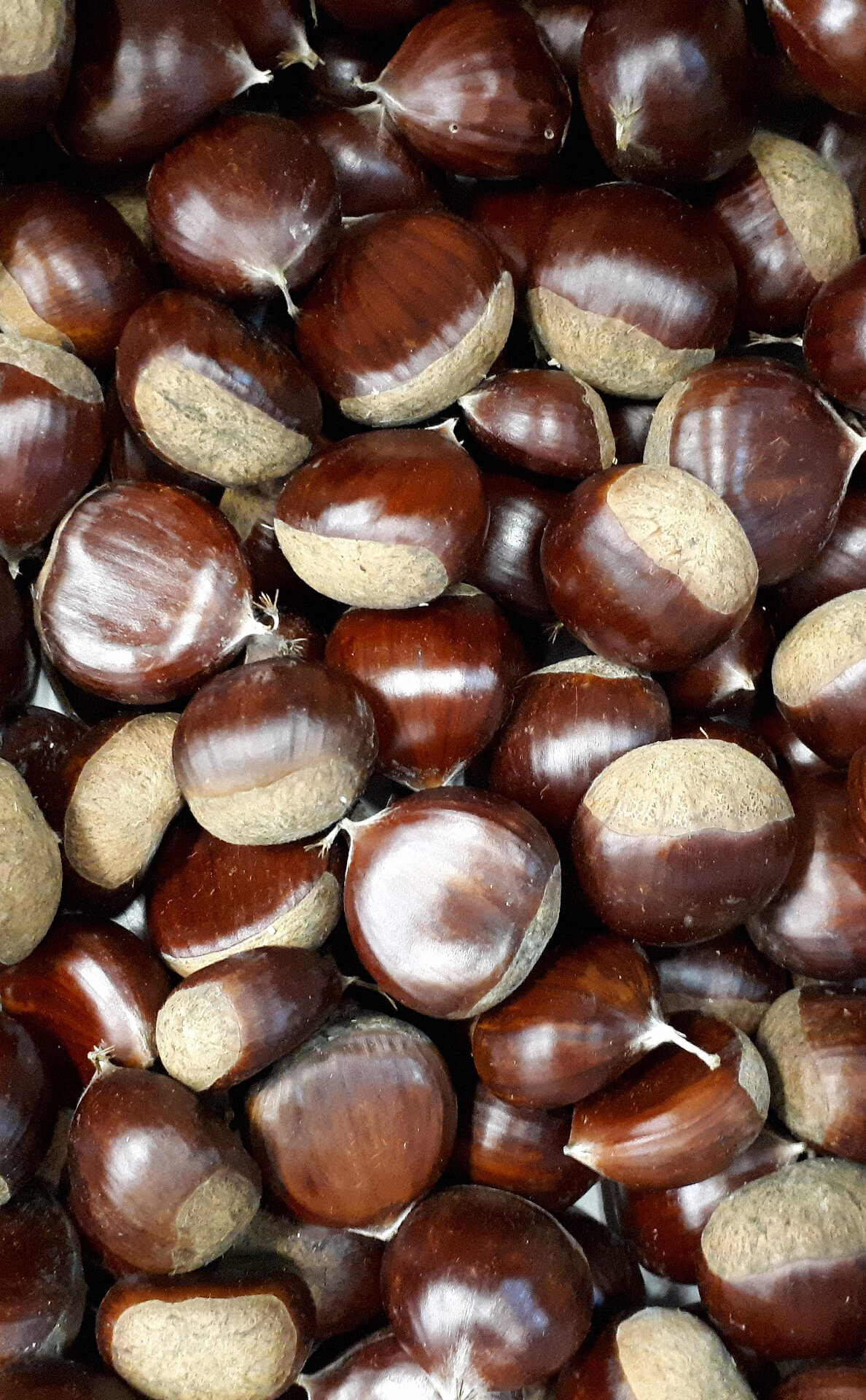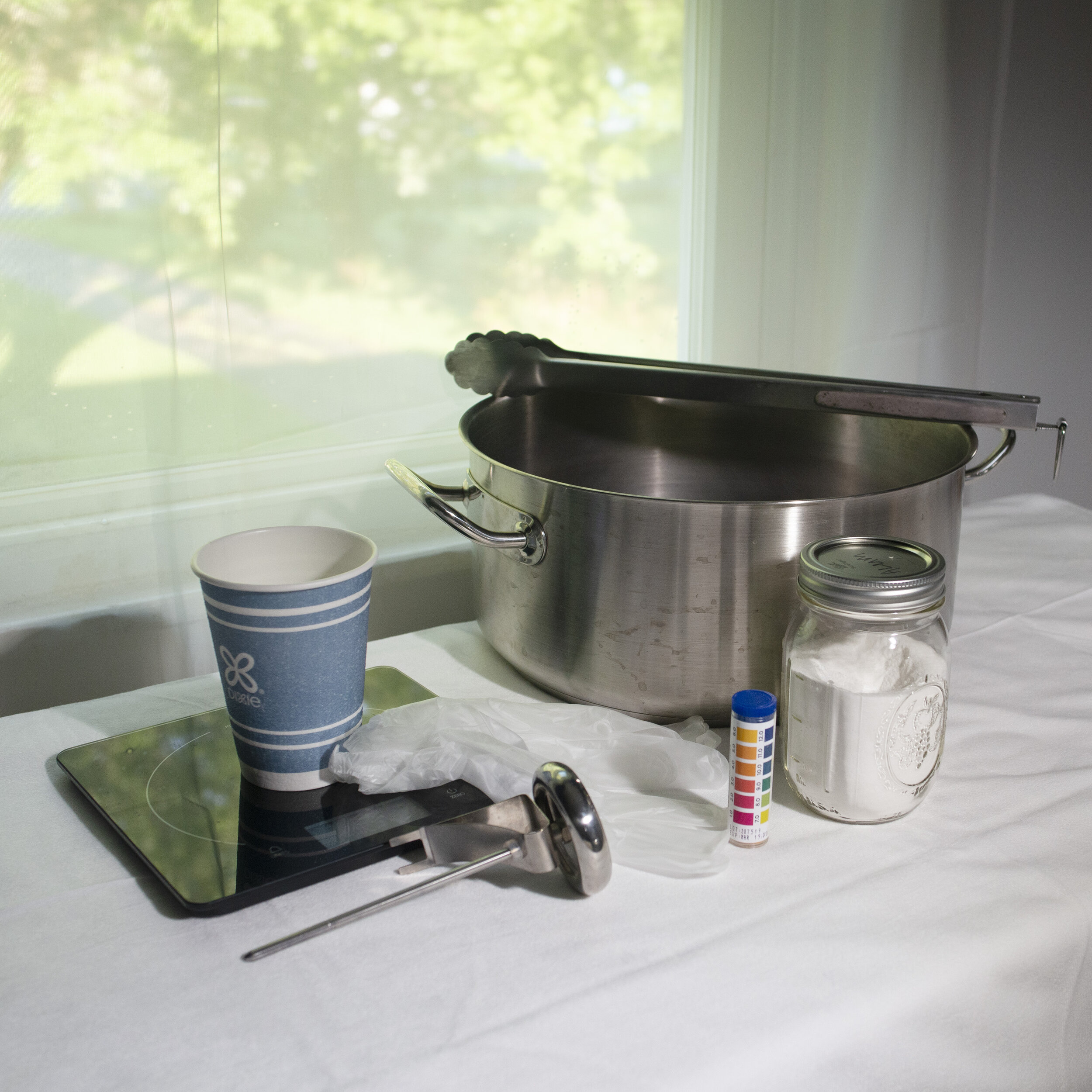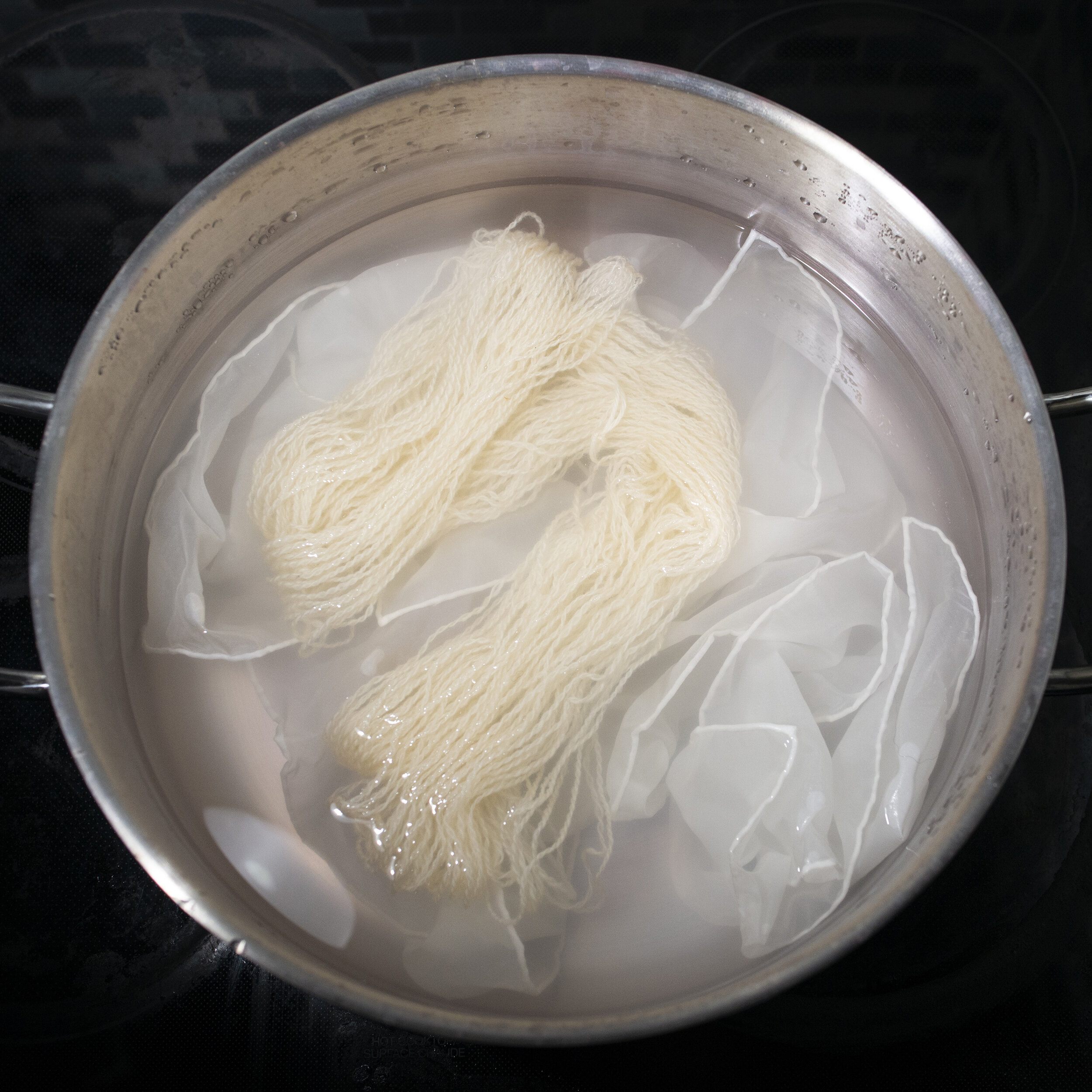
Chestnut Extract
A Guide to Chestnut Extract
Shepherd Textiles Chestnut Extract is made from the wood of castania sativa, the European chestnut tree. Chestnut wood is rich in natural tannins, and it gives a warm sandy brown color on natural fibers. It is also appropriate as a tannin pre-treatment for cellulose fibers, and will give a warm brown base for overdyeing. This extract is produced sustainably in the south of France using an ecological production method: the tannins are extracted using the natural water present in the wood, and no wastewater is created throughout the process. The extracted wood is then used for construction materials, so nothing is wasted.
1. Background on Chestnut
A Winter Treat
The European chestnut, castania sativa, is native to the Mediterranean coasts of southern Europe and Turkey. The tree produces an edible seed, the chestnut, that has been a part of local diets for thousands of years. Chestnuts are lightly sweet when cooked and have a starchy consistency. They are popular ingredients in desserts and stuffings, although Americans will probably be most familiar with them as a roasted treat sold around the Christmas holidays.
The dyestuff in Chestnut Extract comes from the wood of the chestnut tree rather than from the nuts themselves. The wood is rich in tannins, and in the 19th century chestnut wood was an important natural dye in France. It produces an “ellagic” type or warm tannin, rather than a clear tannin like Sumac Extract or a darker brown tannin like Cutch Extract. Chestnut will give a strong, colorfast base of light brown and is an excellent choice for all fiber types, including cotton.
2. Safety Precautions
DO NOT INGEST. This extract was prepared for textile dyeing, not as an herbal supplement.
Avoid eye contact. If eye contact occurs, rinse with cool water.
Not for use as a cosmetic additive; do not apply directly to skin or hair.
Open carefully to avoid spilling or creating dust.
If a spill occurs, quickly wipe up with a paper towel or disposable rag.
Chestnut Extract can permanently dye clothing, countertops, rugs, utensils, or other property. Avoid contact with anything that is not meant to be dyed.
Use only dye pots and utensils dedicated to dyeing. Do not use any pots, containers, spoons, tongs, thermometers, or other utensils that will be used for food preparation.
Chestnut Extract, and all dye baths and mordant liquors made while dyeing, should be kept out of reach of children and pets. Use only with adult supervision.
Shepherd Textiles, LLC is not liable for any misuse of this product or any unintended staining of your clothing, workspace, or other property. Use only as directed.
3. Recommended Supplies
Dye pot. Use a dye pot large enough to hold all your fibers, with plenty of room for them to move around and for the liquid to circulate freely. Otherwise, particles of dye may get stuck on the fabric and cause dark splotches.
Metal tongs. A pair of tongs is useful for stirring and taking fabric out. Use tongs dedicated to dyeing, and not for food preparation.
Rubber gloves. Wear rubber gloves while handling extract powder and while handling mordanted/dyed fiber before it is rinsed.
Candy thermometer. The best way to keep track of temperature is to use a candy thermometer that clips to the side of the dye pot.
Scale. Use a scale to weigh out fiber, mordant, and extract powder.
Alum mordant. The alum usually used for mordanting is aluminum potassium sulfate, also known as potash alum. It is the same alum that you can find in a jar in the spice section at the grocery store.
Disposable cup. For mixing the extract powder to a paste.
4. Preparation: Mordanting with Alum
Chestnut Extract can be used without a mordant, even on cotton, although the browns it produces will be more pale. It bonds most effectively to fibers that have been mordanted with alum. For best results, soak your fibers in water for a few hours before mordanting, so that the mordant will penetrate deeply and evenly. Make sure to weigh the fibers first, while they are still dry.
Alum will dissolve quickly into hot tap water.
Heat fibers for an hour at 180F, then allow to cool.
For protein fibers (wool, silk, alpaca): Mordant at 12% WOF with alum.
Weigh out the fibers you plan to dye (while they are dry). Multiply that weight by 0.12 to get the amount of alum you will need.
Fill your dye pot with hot tap water, leaving enough room for the fiber.
Weigh out the correct amount of alum and pour it into the dye pot. Mix with a spoon or metal tongs until it has dissolved.
Gently place your fibers into the mordanting solution.
Heat mordant bath to 180F and maintain heat for 1 hour. If you don’t have a candy thermometer, you will have to estimate the temperature. At 180F, steam vapor will be rising off the water but it will not be bubbling. If your mordant bath starts to bubble, turn down the heat.
Stir every 15 or 20 minutes to make sure fibers mordant evenly. If they do not, the dye will take better in some places than others.
After an hour, remove from heat and let cool to room temperature. Once cool, you can immediately proceed to rinsing, or you can leave the fibers to steep overnight in the mordant bath. This will improve results, especially when dyeing thick or tightly woven fabrics.
Remove cooled fibers. Wearing rubber gloves, gently squeeze excess mordant solution back into the pot. Rinse briefly in lukewarm water. The fiber does not need to be thoroughly washed, but any excess alum should be rinsed out. Set aside until ready to dye. Keep out of reach of children and pets.
Dispose of mordant solution according to local guidelines.
Note for cellulose fibers (cotton, linen, etc.): Scour well before mordanting as described above.
Chestnut Extract is tannic enough that it can be applied to cellulose fibers without using a mordant. However, for the brightest, strongest tans and sandy browns, be sure to scour the fibers well and treat them with a tannin and mordant first.
Scour cellulose fibers well. Traditionally this is done in a highly alkaline soda ash solution. Add 2 tsp of soda ash and 1 drop of dish soap to a 5-gallon dye pot. Add cellulose fibers and heat to 180F-190F for an hour, stirring occasionally. Remove from heat, and when cool enough to handle, rinse and wring out well. Household detergents like Tide© are also alkaline (PH 11), so you can also toss the fiber in a washing machine on a high-temperature cycle with plenty of detergent. This will not clean them nearly as deeply as simmering with soda ash, but it will yield much better results than not scouring at all.
[OPTIONAL] Apply a tannin to the scoured fabric: you can use a clear tannin like Sumac Extract, or even a pre-treatment of Chestnut Extract. To use, fill your dye pot with hot water, dissolve 3-5% WOF of the extract into the dye bath, and simmer for an hour. This process will make the cotton or linen more receptive to alum and lay down a base of color. Be sure to keep the fiber moving around: some tannins have insoluble particles that love to get stuck in fabric, and they can cause splotches later on in the dyeing process. After an hour, let cool, remove fibers, and rinse well.
Mordant with alum as described above for protein fibers.

The Recipe
5. Recipe: Tan
The basic recipe for Chestnut Extract is to use 5% weight-of-fabric (WOF) on alum-mordanted fiber to produce a tan brown. The depth of color will depend on the fiber type and how thoroughly it is mordanted, but Chestnut Extract is tannic enough that it will apply well to all natural fiber types.
Fill your dye pot with warm water, making sure there is enough room for the fabric to move around and for water to circulate freely.
Weigh out 5% weight-of-fabric (WOF) Chestnut Extract into a disposable cup (multiply the dry weight of the fabric by 0.05 to get the correct amount of extract).
Add a little hot water to the cup and mix to form a thin slurry. Make sure to break up any clumps of powder, otherwise they may cause splotches on your fiber.
Pour the Chestnut Extract slurry into the dyebath and mix well. At this point the dyebath will be a light brown color.
Add your pre-mordanted, wetted fibers to the dyebath.
Raise the temperature to 170°F for protein fibers or 190°F for cotton. Maintain for 1 hour to 1.5 hours, stirring every 20 minutes or so to make sure everything dyes evenly.
After 1 or 1.5 hours, remove pot from heat and allow to cool to room temperature.
Remove the fibers and rinse briefly in lukewarm water to remove any particles of dye. You can either proceed immediately to rinsing with detergent, or hang the fabric up to dry first to help the color set. Make sure to hang it up somewhere where dripping dye will cause no damage.
For final rinsing, we recommend using a PH-neutral detergent like Synthrapol, it is designed to wash out loose dye. Follow the manufacturer’s directions for best results. CAUTION: Gum Arabic Extract may bleed if not thoroughly rinsed out after dyeing.
Hang up to dry.
All images and text are copyright of Shepherd Textiles, LLC. Do not reproduce without permission and attribution.






